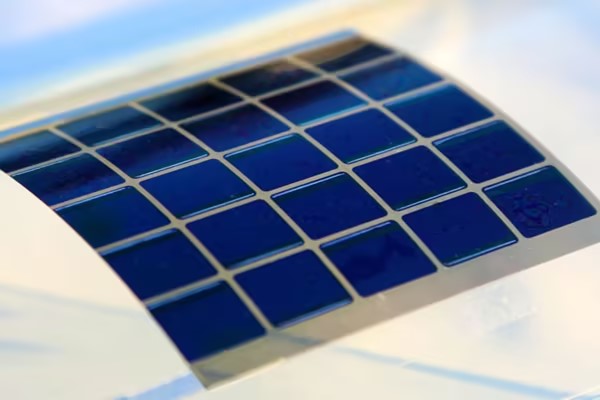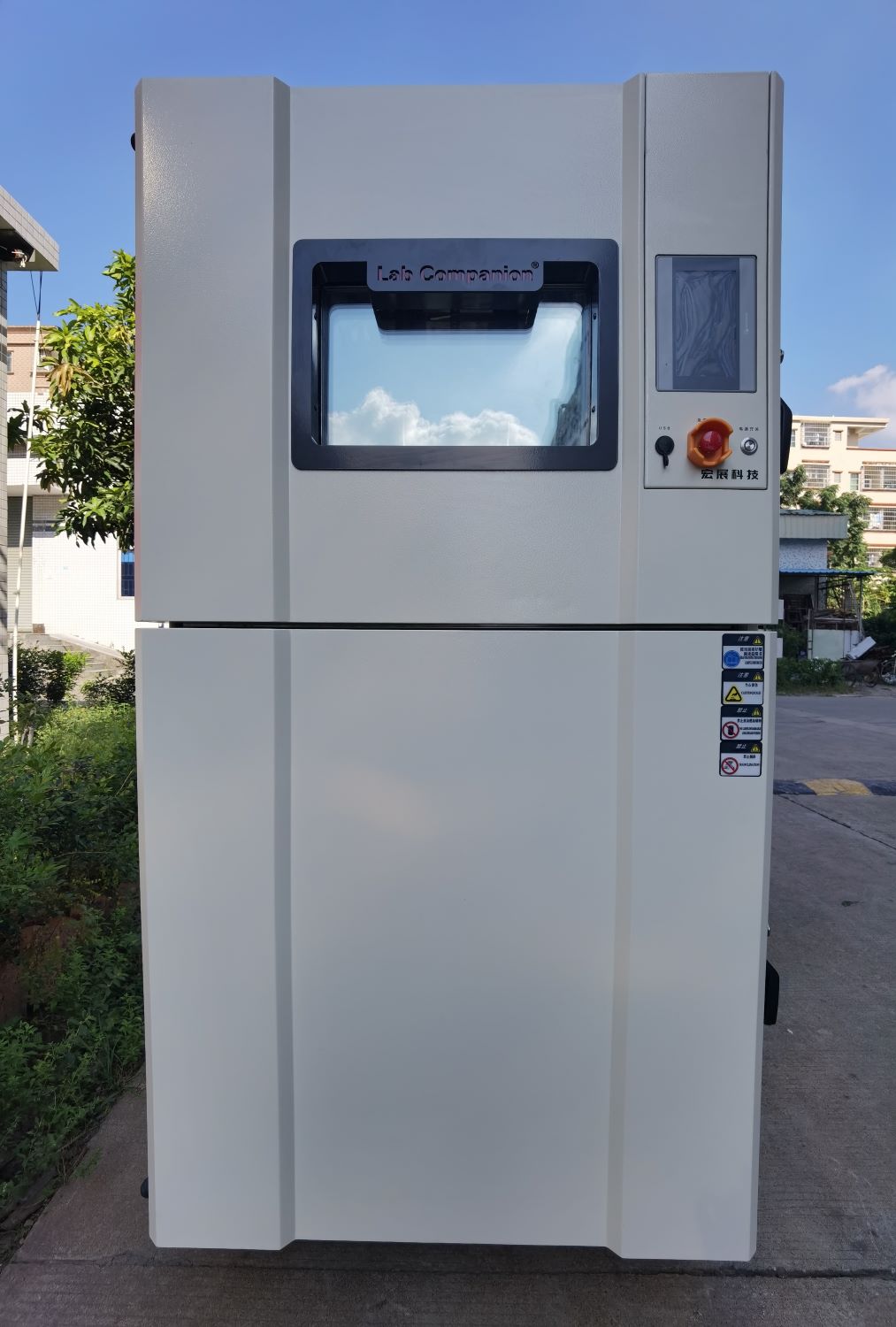IEEE1513 Temperature Cycle Test and Wet Freezing Test, Humidity Heat Test 2

Steps:
Both modules will perform 200 cycle temperature cycles between -40 °C and 60 °C or 50 cycle temperature cycles between -40 °C and 90 °C, as specified in ASTM E1171-99.
Note:
ASTM E1171-01: Test method for photoelectric modulus at Loop Temperature and humidity
Relative humidity does not need to be controlled.
The temperature variation should not exceed 100℃/ hour.
The residence time should be at least 10 minutes and the high and low temperature should be within the requirement of ±5℃
Requirements:
a. The module will be inspected for any obvious damage or degradation after the cycle test.
b. The module should not show any cracks or warps, and the sealing material should not delaminate.
c. If there is a selective electrical function test, the output power should be 90% or more under the same conditions of many original basic parameters
Added:
IEEE1513-4.1.1 Module representative or receiver test sample, if a complete module or receiver size is too large to fit into an existing environmental test chamber, the module representative or receiver test sample may be substituted for a full-size module or receiver.
These test samples should be specially assembled with a replacement receiver, as if containing a string of cells connected to a full-size receiver, the battery string should be long and include at least two bypass diodes, but in any case three cells are relatively few, which summarizes the inclusion of links with the replacement receiver terminal should be the same as the full module.
The replacement receiver shall include components representative of the other modules, including lens/lens housing, receiver/receiver housing, rear segment/rear segment lens, case and receiver connector, procedures A, B, and C will be tested.
Two full-size modules should be used for outdoor exposure test procedure D.
IEEE1513-5.8 Humidity freeze cycle test Humidity freeze cycle test
Receiver
Purpose:
To determine whether the receiving part is sufficient to resist corrosion damage and the ability of moisture expansion to expand the material molecules. In addition, frozen water vapor is the stress for determining the cause of failure
Procedure:
The samples after temperature cycling will be tested according to Table 3, and will be subjected to wet freezing test at 85 ℃ and -40 ℃, humidity 85%, and 20 cycles. According to ASTM E1171-99, the receiving end with large volume shall refer to 4.1.1
Requirements:
The receiving part shall meet the requirements of 5.7. Move out of the environment tank within 2 to 4 hours, and the receiving part should meet the requirements of the high-voltage insulation leakage test (see 5.4).
module
Purpose:
Determine whether the module has sufficient capacity to resist harmful corrosion or widening of material bonding differences
Procedure: Both modules will be subjected to wet freezing tests for 20 cycles, 4 or 10 cycles to 85 ° C as shown in ASTM E1171-99.
Please note that the maximum temperature of 60 ° C is lower than the wet freezing test section at the receiving end.
A complete high voltage insulation test (see 5.4) will be completed after a two to four hour cycle. Following the high voltage insulation test, the electrical performance test as described in 5.2 will be carried out. In large modules may also be completed, see 4.1.1.
Requirements:
a. The module will check for any obvious damage or degradation after the test, and record any.
b. The module should exhibit no cracking, warping, or severe corrosion. There should be no layers of sealing material.
c. The module shall pass the high voltage insulation test as described in IEEE1513-5.4.
If there is a selective electrical function test, the output power can reach 90% or more under the same conditions of many original basic parameters
IEEE1513-5.10 Damp heat test IEEE1513-5.10 Damp heat test
Objective: To evaluate the effect and ability of receiving end to withstand long-term moisture infiltration.
Procedure: The test receiver is tested in an environmental test chamber with 85%±5% relative humidity and 85 ° C ±2 ° C as described in ASTM E1171-99. This test should be completed in 1000 hours, but an additional 60 hours can be added to perform a high voltage insulation leakage test. The receiving part can be used for testing.
Requirements: The receiving end needs to leave the damp heat test chamber for 2 ~ 4 hours to pass the high voltage insulation leakage test (see 5.4) and pass the visual inspection (see 5.1). If there is a selective electrical function test, the output power should be 90% or more under the same conditions of many original basic parameters.
IEEE1513 Module test and inspection procedures
IEEE1513-5.1 Visual inspection procedure
Purpose: To establish the current visual status so that the receiving end can compare whether they pass each test and guarantee that they meet the requirements for further testing.
IEEE1513-5.2 Electrical performance test
Objective: To describe the electrical characteristics of the test module and the receiver and to determine their peak output power.
IEEE1513-5.3 Ground continuity test
Purpose: To verify electrical continuity between all exposed conductive components and the grounding module.
IEEE1513-5.4 Electrical isolation test (dry hi-po)
Purpose: To ensure that the electrical insulation between the circuit module and any external contact conductive part is sufficient to prevent corrosion and safeguard the safety of workers.
IEEE1513-5.5 Wet insulation resistance test
Purpose: To verify that moisture cannot penetrate the electronically active part of the receiving end, where it could cause corrosion, ground failure, or identify hazards for human safety.
IEEE1513-5.6 Water spray test
Objective: The field wet resistance test (FWRT) evaluates the electrical insulation of solar cell modules based on humidity operating conditions. This test simulates heavy rain or dew on its configuration and wiring to verify that moisture does not enter the array circuit used, which can increase corrosiveness, cause ground failures, and create electrical safety hazards for personnel or equipment.
IEEE1513-5.7 Thermal cycle test (Thermal cycle test)
Objective: To determine whether the receiving end can properly withstand the failure caused by the difference in thermal expansion of parts and joint materials.
IEEE1513-5.8 Humidity freeze cycle test
Objective: To determine whether the receiving part is sufficiently resistant to corrosion damage and the ability of moisture expansion to expand the material molecules. In addition, frozen water vapor is the stress for determining the cause of failure.
IEEE1513-5.9 Robustness of terminations test
Purpose: To ensure the wires and connectors, apply external forces on each part to confirm that they are strong enough to maintain normal handling procedures.
IEEE1513-5.10 Damp heat test (Damp heat test)
Objective: To evaluate the effect and ability of receiving end to withstand long-term moisture infiltration. I
EEE1513-5.11 Hail impact test
Objective: To determine whether any component, especially the condenser, can survive hail. IE
EE1513-5.12 Bypass diode thermal test (Bypass diode thermal test)
Objective: To evaluate the availability of sufficient thermal design and use of bypass diodes with relative long-term reliability to limit the adverse effects of module thermal shift diffusion.
IEEE1513-5.13 Hot-spot endurance test (Hot-Spot endurance test)
Objective: To assess the ability of modules to withstand periodic heat shifts over time, commonly associated with failure scenarios such as severely cracked or mismatched cell chips, single point open circuit failures, or uneven shadows (shaded portions). I
EEE1513-5.14 Outdoor exposure test (Outdoor exposure test)
Purpose: In order to preliminarily assess the capability of the module to withstand exposure to outdoor environments (including ultraviolet radiation), the reduced effectiveness of the product may not be detected by laboratory testing.
IEEE1513-5.15 Off-axis beam damage test
Purpose: To ensure that any part of the module is destroyed due to module deviation of the concentrated solar radiation beam.
